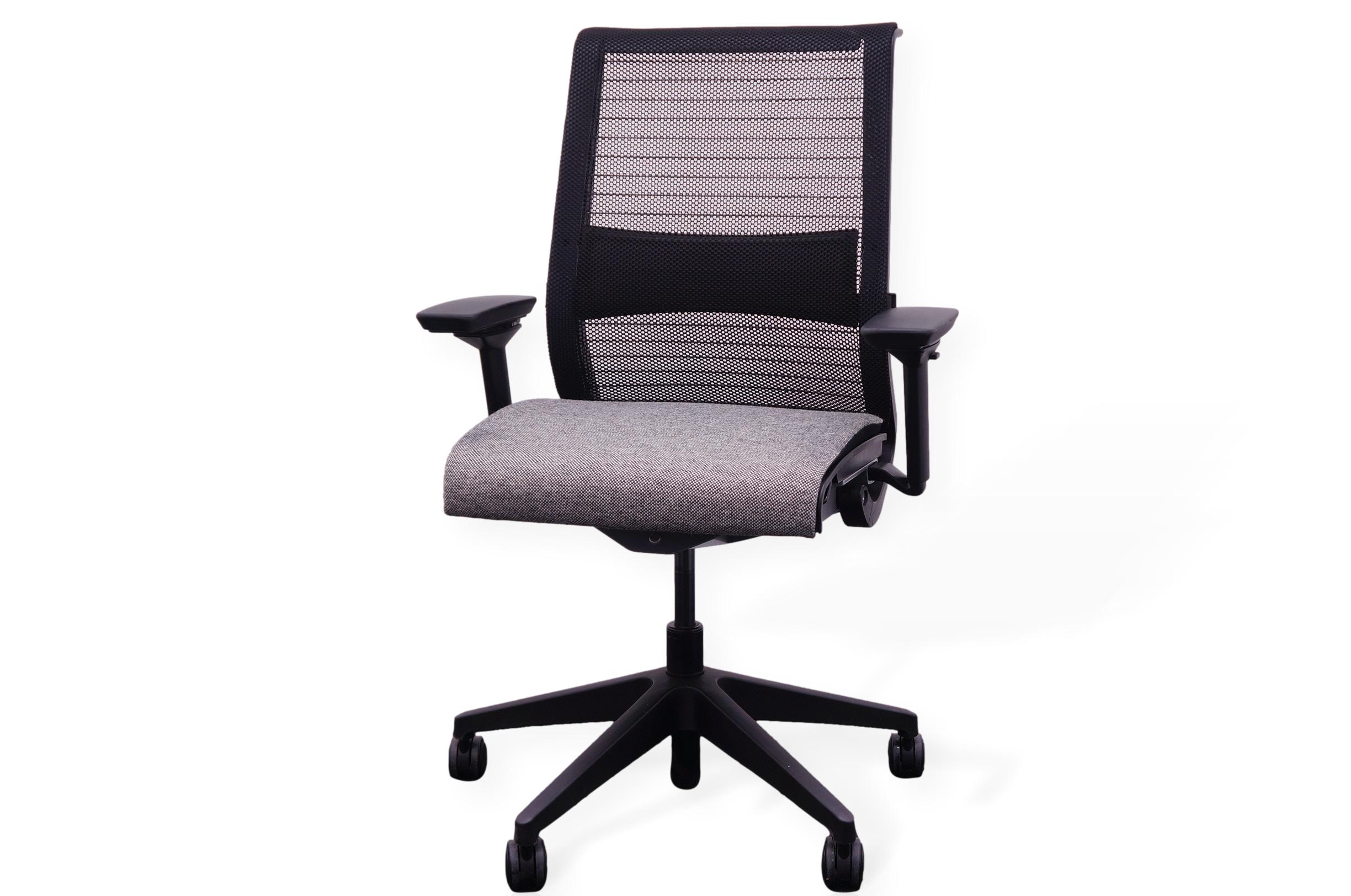In today’s fast-paced and technology-driven world, many of us spend extended periods sitting at our desks, often experiencing discomfort and fatigue. Investing in an ergonomic office chair to support our bodies and promote good posture is the solution. However, simply owning an ergonomic chair isn’t enough; How to set up an ergonomic chair correctly is equally crucial. In this blog post, we will guide you on how to set up an ergonomic office chair to maximise comfort, productivity, and overall well-being.

Written by Neil Drewett
 Office Furniture Specialist
Office Furniture Specialist
Neil has extensive knowledge of office furniture, with over 20 years’ experience in the industry. He has helped Office Resale grow into a leading brand in the refurbished furniture market.
Understanding Clearances and Fit Outs
Before delving into the importance of sustainability in clearances and fit outs, it’s essential to understand these terms. Clearances refer to removing furniture, fixtures, and other items from space, often in preparation for renovation or office relocation. Fit outs, on the other hand, involve designing and installing new interiors or features in a building.
Both processes typically generate significant waste, energy consumption, and resource utilisation. Traditional clearances and fit outs often lead to landfill waste and the use of non-renewable materials, further exacerbating environmental issues
Adjusting Seat Height:
Firstly, adjust the seat height so that your feet rest flat on the floor or flat on a footrest. Your knees should be at a 90-degree angle and level with or slightly below your hips. This position promotes proper blood circulation and reduces pressure on the lower back.
Positioning Lumbar Support:
Ergonomic chairs often have an adjustable lumbar support which fit the natural curve of your lower back, providing adequate support to minimise strain.
Setting Armrest Height:
Position armrests at a height where your arms can rest comfortably and your shoulders can relax. Adjust the arm rests so your forearms are parallel to the floor, allowing your elbows to rest at a 90-degree angle. This position reduces tension in the neck, shoulders, and upper back.
Aligning Backrest Angle:
The backrest of your ergonomic chair should support the natural curvature of your spine. Adjust the angle to provide optimal support while maintaining a slight recline of around 100-110 degrees. This position helps distribute your body weight evenly, reducing stress on your spine.
Adjusting Seat Depth:
Ensure the seat depth allows you to sit comfortably with your back against the backrest. There should be a two-finger gap between the edge of the seat and the back of your knees. This adjustment prevents pressure on the thighs and promotes healthy circulation.
Eye-Level Alignment:
Avoid straining your neck and eyes by positioning your computer monitor at eye level. If needed, use a monitor stand or adjust the height of your desk chair accordingly. Keep your head upright and facing forward, keeping your neck neutral.
Taking Regular Breaks:
Even with an ergonomic office chair, it is essential to remember that sitting for prolonged periods can still lead to discomfort and health issues. Take regular breaks, stand up, stretch, and walk around. Incorporate movement into your work routine to maintain overall well-being.
Conclusion:
Investing in an ergonomic office chair is a wise decision for those who spend extended periods sitting at a desk. However, it is equally important to set up the chair correctly to reap its benefits fully. Following these steps, you can ensure that your ergonomic chair promotes good posture, reduces strain, and enhances overall comfort and productivity. Remember, maintaining a healthy workspace is essential for your well-being in the long run.
Shop our refurbished chairs to help save the environment as well as your back!
For more information on how we can help you find the right office furniture, contact Neil who would be happy help – ndrewett@crownww.com

 Office Furniture Specialist
Office Furniture Specialist 
